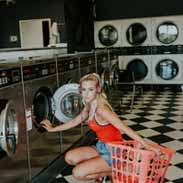chapter18,21 true false – Flashcards
Unlock all answers in this set
Unlock answersquestion
Total variable costs change in proportion to changes in volume of activity.
answer
true
question
As the volume increases, fixed cost per unit of output remains constant.
answer
false
question
Cost-volume-profit analysis requires management to classify all costs as either fixed or variable with respect to production or sales volume within the relevant range of operations.
answer
true
question
The dollar amount of sales needed to achieve a target income is computed by dividing the sum of fixed costs plus the target income by the contribution margin ratio.
answer
true
question
The contribution margin ratio is the percent of each sales dollar that remains after deducting the total unit variable cost.
answer
true
question
The high-low method of deriving an estimated cost line uses all the data points available.
answer
false
question
The break-even point is the sales level at which a company neither earns a profit nor incurs a loss.
answer
true
question
To calculate the break-even point in units, one must know unit fixed cost, unit variable cost, and sales price.
answer
false
question
Managerial accounting reports and information are used by external users and financial accounting by internal users.
answer
false
question
Both financial and managerial accounting affect user's decisions and actions.
answer
true
question
The concept of total quality management focuses on continuous improvement.
answer
true
question
Just-in-time manufacturing is a system that acquires inventory and produces product only when needed for an order.
answer
true
question
Costs may be classified by many different cost classifications.
answer
true
question
Straight line depreciation, rent and manager salaries are examples of variable costs.
answer
false
question
Cost concepts such as variable, fixed, mixed, direct and indirect apply only to manufacturers and not to service companies.
answer
false
question
A variable cost changes in proportion to changes in the volume in activity.
answer
true
question
Product costs are capitalized as inventory on the balance sheet and period costs are expenses on the income statement.
answer
true
question
Selling and administrative expenses are normally period costs.
answer
true
question
Prime costs consist of direct labor and factory overhead.
answer
false
question
The collection of cost sheets for unfinished jobs makes up a subsidiary ledger controlled by the Work in Process Inventory account in the general ledger.
answer
true
question
Job cost sheets are used to track all of the costs assigned to a job, including direct materials, direct labor, overhead, and all selling and administrative costs.
answer
false
question
Both direct and indirect labor costs are recorded on the individual job cost sheets.
answer
false
question
The cost of all direct materials issued to production is debited to Work in Process Inventory.
answer
true
question
The predetermined overhead rate is used to allocate overhead cost to jobs.
answer
true
question
In a job order costing system, indirect labor costs are debited to the Factory Overhead account.
answer
true
question
Direct materials and direct labor are examples of costs that are debited to the Factory Overhead account in a job costing system.
answer
false
question
The schedule of cost of goods manufactured for a job costing system includes total actual factory overhead.
answer
false
question
The managers of process operations focus on the series of repetitive processes, or steps, resulting in a noncustomized product or service.
answer
true
question
In a process costing system costs are measured upon completion of each job.
answer
false
question
Equivalent units of production refer to the number of units that could have been started and completed given the costs incurred during the period.
answer
true
question
Equivalent units of production for direct materials and direct labor are usually the same.
answer
false
question
Conversion cost per equivalent unit is the combined costs of direct materials and factory overhead.
answer
false
question
In a process costing system, the purchase of raw materials is debited to the Raw Materials Inventory.
answer
true
question
In a process costing system, the entry to record cost of materials assigned to a production department requires a debit to the Raw Materials Inventory account and a credit to the Work in Process Inventory account for that department.
answer
false
question
If a department that applies process costing starts the reporting period with 40,000 physical units that were 80% complete with respect to direct materials and 50% complete with respect to direct labor, it must add 8,000 equivalent units of direct materials and 20,000 equivalent units of direct labor to complete them.
answer
true
question
The cost of units transferred from Work in Process Inventory to Finished Goods Inventory is called the cost of goods manufactured.
answer
true



